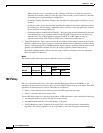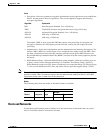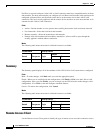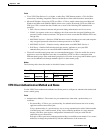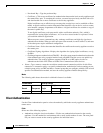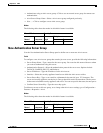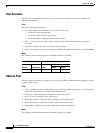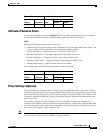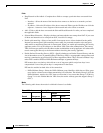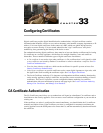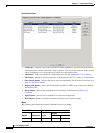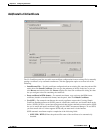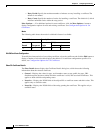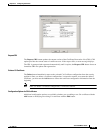
32-12
Cisco ASDM User Guide
OL-16647-01
Chapter 32 VPN
VPN Wizard
Fields
• Host/Network to Be Added—Complete these fields to exempt a particular host or network from
NAT.
–
Interface—Select the name of the interface that connects to the hosts or networks you have
selected.
–
IP address—Select the IP address of the host or network. Either type the IP address or click the
adjacent ... button to view a diagram of the network and select a host or network.
• Add—Click to add the host or network the Selected Hosts/Networks list after you have completed
the applicable fields.
• Selected Hosts/Networks—Displays the hosts and networks that are exempt from NAT. If you want
all hosts and networks to be exempt from NAT, leave this list empty.
• Enable split tunneling—Select to have traffic from remote access clients destined for the public
Internet sent unencrypted. Split tunneling causes traffic for protected networks to be encrypted,
while traffic to unprotected networks is unencrypted. When you enable split tunneling, the security
appliance pushes a list of IP addresses to the remote VPN client after authentication. The remote
VPN client encrypts traffic to the IP addresses that are behind the security appliance. All other traffic
travels unencrypted directly to the Internet without involving the security appliance.
• Enable Perfect Forwarding Secrecy (PFS)—Specify whether to use Perfect Forward Secrecy, and the
size of the numbers to use, in generating Phase 2 IPsec keys. PFS is a cryptographic concept where each
new key is unrelated to any previous key. In IPsec negotiations, Phase 2 keys are based on Phase 1 keys
unless PFS is enabled. PFS uses Diffie-Hellman techniques to generate the keys.
PFS ensures that a session key derived from a set of long-term public and private keys is not
compromised if one of the private keys is compromised in the future.
PFS must be enabled on both sides of the connection.
–
Diffie-Hellman Group—Select the Diffie-Hellman group identifier, which the two IPsec peers
use to derive a shared secret without transmitting it to each other. The default, Group 2 (1024-bit
Diffie-Hellman), requires less CPU time to execute but is less secure than Group 5 (1536-bit).
Group 7 is for use with the Movian VPN client, but works with any peer that supports Group 7
(ECC).
Modes
The following table shows the modes in which this feature is available:
Firewall Mode Security Context
Routed Transparent Single
Multiple
Context System
• — • ——



